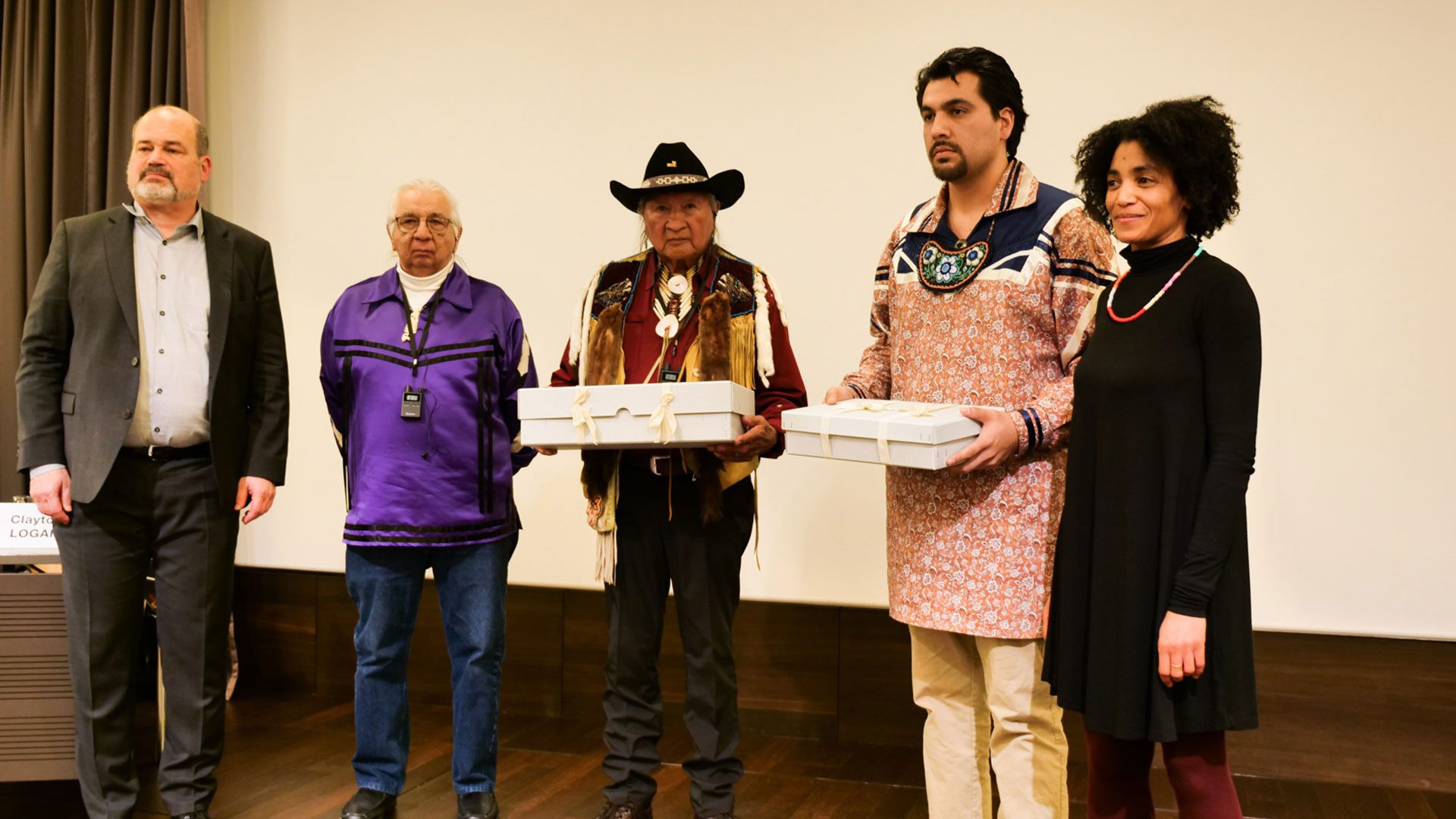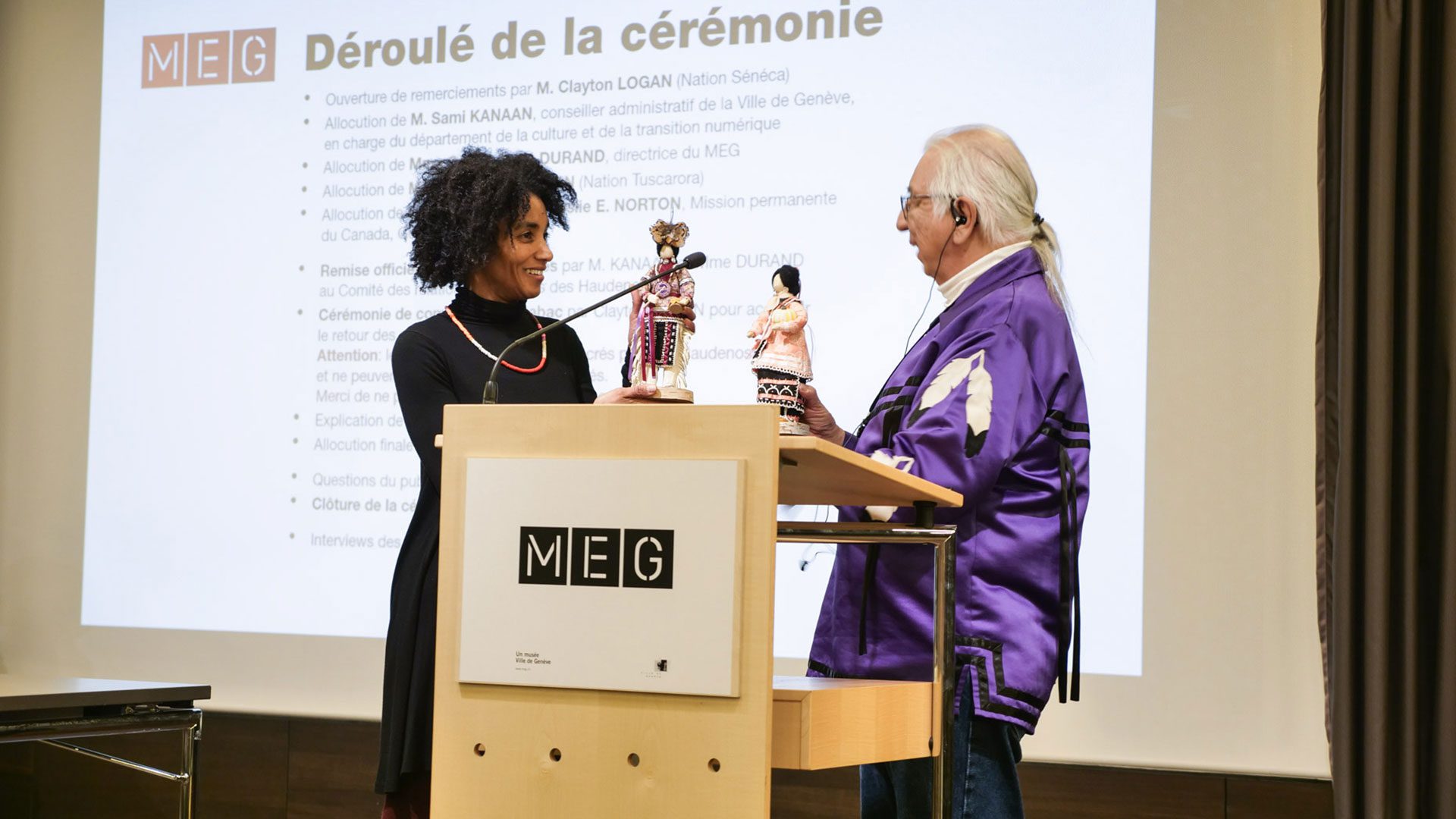A turtle rattle and medicine mask are back in the hands of the Tuscarora Nation after they were returned by a museum in Geneva.
The two sacred items were on display at the Museum of Ethnography of Geneva when members of Tuscarora Nation, part of the Haudenosaunee Confederacy, saw them during a trip in July 2022.
“In the permanent exhibit they saw a medicine mask and a turtle rattle, and right away came to me and they said ‘that shouldn’t be there,’” said Kenneth Deer of Kahnawà:ke, a member of the Haudenosaunee External Relations Committee and travels to Geneva to keep track of Canada’s record on human rights.
“We had a good working relationship with the museum already, so we talked to the director, and we told her that the mask should be taken down, and she said ‘if it’s offensive to you, we’ll take it down.’”
The Museum of Ethnography of Geneva hosted a ceremony to return the items to the Tuscarora Nation on Feb. 7.
“These restitutions and these returns are not an end in and of themselves but are a step in a long process that started a hundred years ago and that will continue with regular exchanges and collaborations,” said museum director Carine Ayélé Durand in her speech at the ceremony.

Two days after the ceremony, the Haudenosaunee planted a tree of peace in Geneva to commemorate a relationship with the city that goes back decades.
Deer visits Geneva, home to the United Nations Human Rights Council, frequently as a representative of the Haudenosaunee external relations committee. He said the city has historically supported the Haudenosaunee nation.
In 1923, Chief Deskaheh of Six Nations went there to speak at the League of Nations — the UN’s predecessor — to denounce Canada’s treatment of Indigenous Peoples.
He was blocked from speaking by Canada and Great Britain, but Deer said the City of Geneva allowed Deskaheh to address its citizens publicly.
“He was well received by the people of Geneva. They supported [Deskaheh], he walked among them, and many dignitaries and the mayor of Geneva were helping him with his objectives with the League,” Deer told APTN News.
Most international repatriations of cultural objects require consent between national governments, but Geneva dealt with the Haudenosaunee on a nation-to-nation basis. That’s not always the case.
The Yaquí tribe in southern U.S. and Mexico, for example, got a sacred deer’s head back last year from a Swedish museum after 20 years of negotiating. They had to remind the government of Mexico to release the head to them.
“Some, you know, colonizing entities feel that they’re superior to us and they don’t, they feel that they should have it, or they have a right to it. And we say no, you don’t. That’s our stuff, we will decide who has a right to use these masks,” said Deer.

Deer said he hopes sacred objects will be returned faster in the future.
“Seven months is a model for other museums to follow. The museum directly returning the material to the Indigenous people concerned. Not to another museum, or not to another government, but to the Indigenous People,” said Deer.
The mask and rattle are in good hands, he added and will be used for ceremony.
“We understand that museums play a role in educating people, and we want people to be educated about our people. So we have no objection to rattles or a water drum or other artifacts, stuff from our culture. But I don’t think museums should have our sacred items and they should be returned,” said Deer.
“There’s no value for them to be displayed, but they have value, high value to us.”









